Grant Barr
Senior Airman
For my next project I was looking to build a model almost out of the box. For this I chose a Ju-87 by Italeri from the stash. Whilst I say "OOB" I am sure that some minor scratching and enhancements will creep into the build, but the aim is to keep this one as simple as possible. I'd like to finish this one in a more timely manner!
This kit is pretty well known by aircraft modellers so I wont bore everyone with what I think of the kit - simply that it looks good and I am keen to get started. I've added the box art and shots of the kit sprues below:
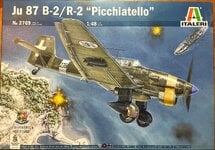

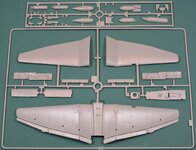
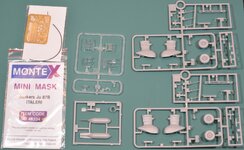
I really only bought this kit as it had an option to do a German version with the North Africa colour scheme. I have no idea why, but the North Africa schemes on German aircraft really appeal to me. The bonus with this kit is the scheme also has a cool snake along the sides. As another of our members, Vic Balshaw
, has recently built an excellent aircraft from this unit, I wont go into details regarding the veracity of the scheme or conjecture on various possibilities.
Vic Balshaw
, has recently built an excellent aircraft from this unit, I wont go into details regarding the veracity of the scheme or conjecture on various possibilities.
In this kit the scheme is the Version E as shown below along with the very comprehensive decal sheet that comes with the kit (Italeri seem to do a really good job on their decals - every one of their kits I have contains a cracking set).
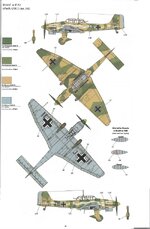
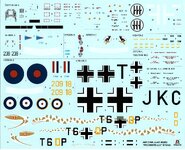
So, having established the basics, I even got to make a start on the cockpit this afternoon. Not a whole lot of work, but I have cleaned up nearly all the cockpit tub parts and assembled those that can be in preparation for a coat of RLM02.
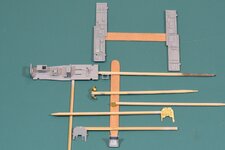
A couple of things I've noticed about the kit are:

Thanks for looking in on my latest project. Cheers.
This kit is pretty well known by aircraft modellers so I wont bore everyone with what I think of the kit - simply that it looks good and I am keen to get started. I've added the box art and shots of the kit sprues below:




I really only bought this kit as it had an option to do a German version with the North Africa colour scheme. I have no idea why, but the North Africa schemes on German aircraft really appeal to me. The bonus with this kit is the scheme also has a cool snake along the sides. As another of our members,
In this kit the scheme is the Version E as shown below along with the very comprehensive decal sheet that comes with the kit (Italeri seem to do a really good job on their decals - every one of their kits I have contains a cracking set).


So, having established the basics, I even got to make a start on the cockpit this afternoon. Not a whole lot of work, but I have cleaned up nearly all the cockpit tub parts and assembled those that can be in preparation for a coat of RLM02.

A couple of things I've noticed about the kit are:
- The PE is brass, and unlike the newer PE sets (think Eduard) they are nice and soft and easy to clean up and fold. The only downside is that they are unpainted - not a big downside mind you...
- The instrument faces are on a decal. Initial line up to the PE shows its not 100% accurate. I might need to cut the decal in various places to ensure that it will line up to the PE as necessary.
- The rear gunner seat is a bit dodgy. I suspect the real seat is actually just a cross web of seat belt webbing type material. The kit has them looking like tubes or rods. My initial reaction was to cut them out of the outside frame and redo with thin styrene strips bent into shape, but this would be going off reservation already, and I am only on the first step! The seat is only lightly pinned with some PVA just in case it gets to me and I rip it apart to "fix"!
Thanks for looking in on my latest project. Cheers.

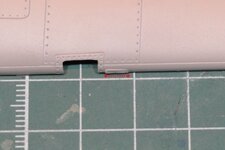
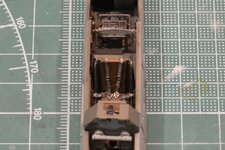
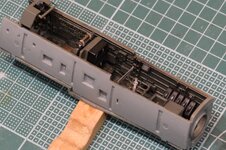
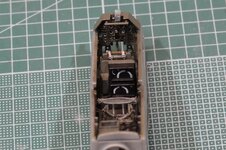
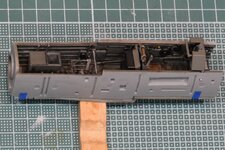
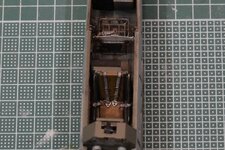
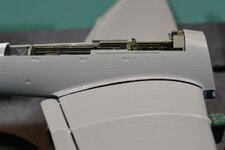
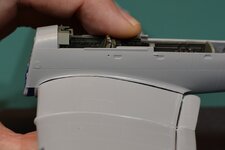
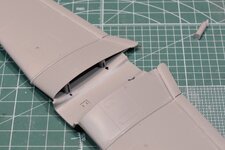
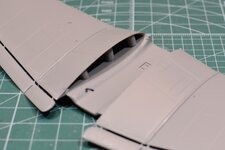
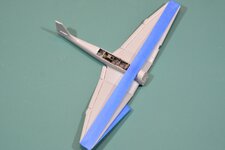
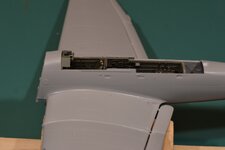
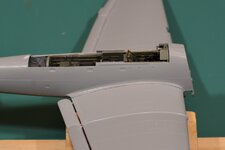
 ).
).